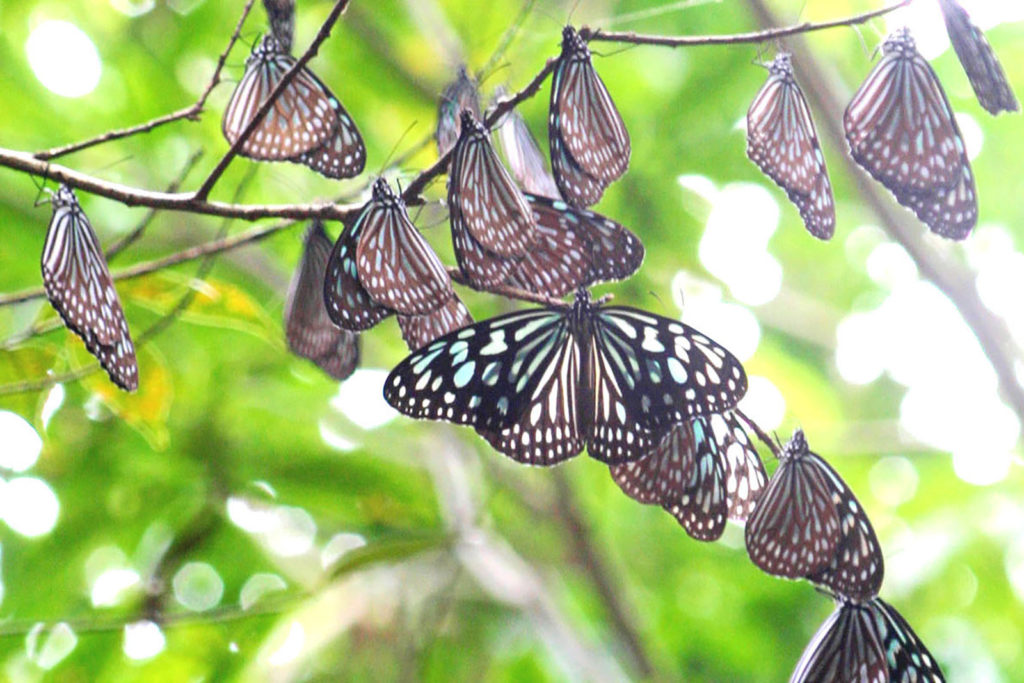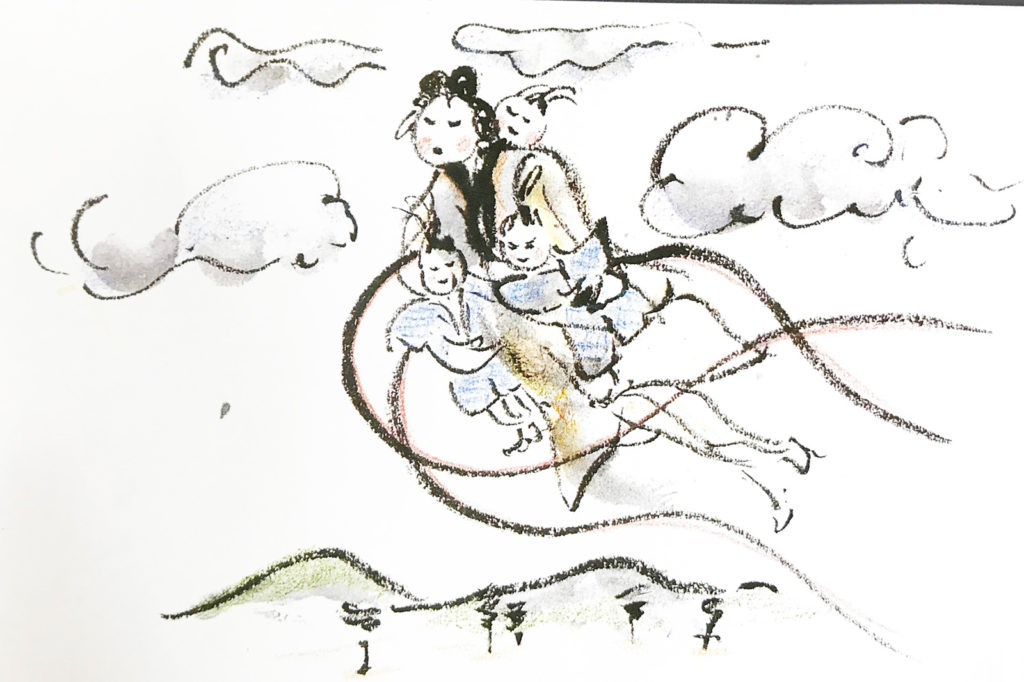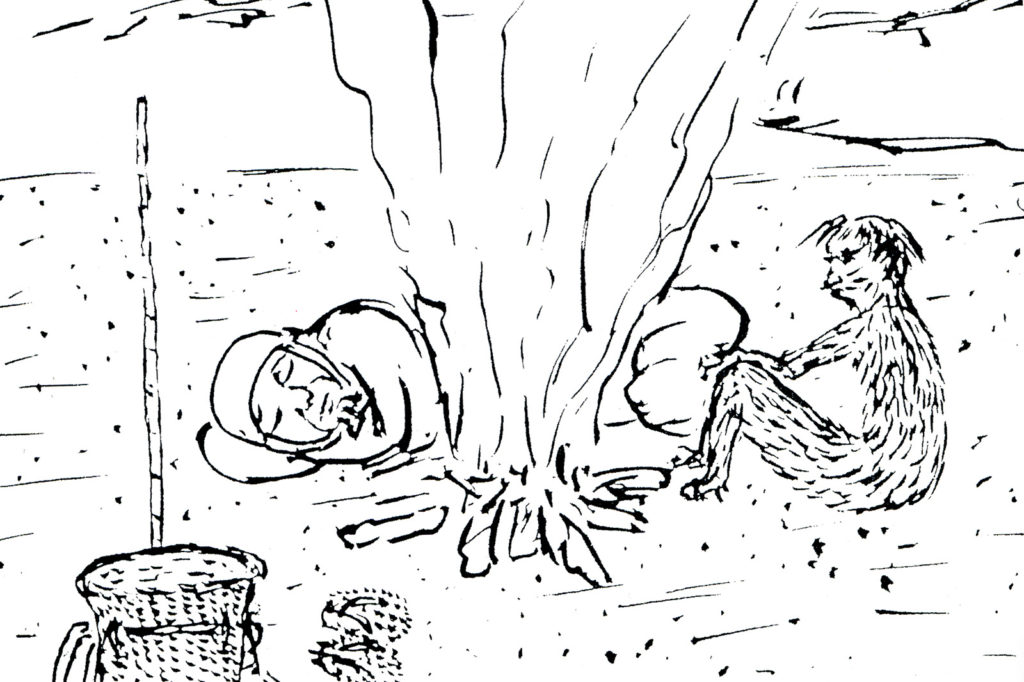
Storied Islands
Amami Folk Tales Among World Folk Tales
A variety of folktales (myths, legends, old tales), folk songs, children’s songs, and proverbs have been handed down on the Amami Islands. Folktales are a gift from the ancestors that we should pass down from parents to children and on to grandchildren.
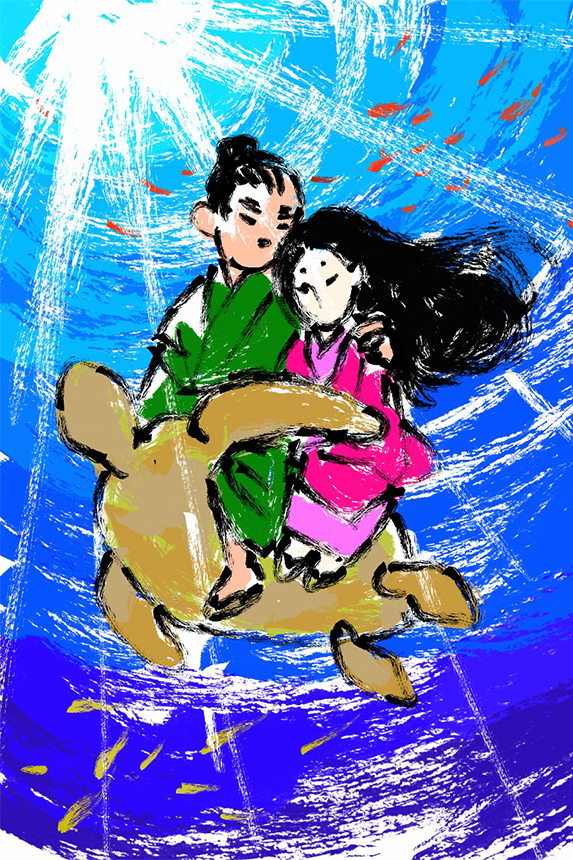
The Legend of the Dragon King’s Palace illustration
“The Legend of the Dragon King’s Palace” is a story with mythical elements in which a sea turtle carries a youth to the Dragon King’s Palace where he marries a beautiful maiden. The story is influenced by China and South Korea and handed down in many places in Amami. People on Amami believed that there is a land of happiness called Neriya Kanaya where a god resides beyond the ocean. It is also the land that spirits of the deceased head towards and the land that brings wealth to people. Some people call this Neriya Kanaya the Dragon King’s Palace possibly because the idea of Neriya Kanaya is similar to the idea of the Dragon King’s Palace of China and Japan. Amami people still have a deep longing for the Dragon King’s Neriya Kanaya Palace.
“Heavenly Wife” is a legend of the celestial raiment told throughout Asia as the origin of the Tanabata Star Festival. The motif that a man takes away a heavenly maiden’s raiment while she is bathing and eventually makes her his wife is thought to originate in ancient India, but it is also shared with Indonesia, South Korea, China, and Europe. There is a Tenkou (Descent from Heaven) Shrine in Kikaijima, where the legend is sung in a lullaby, and told as lyrics of the Amorokudoki song in Tokunoshima.
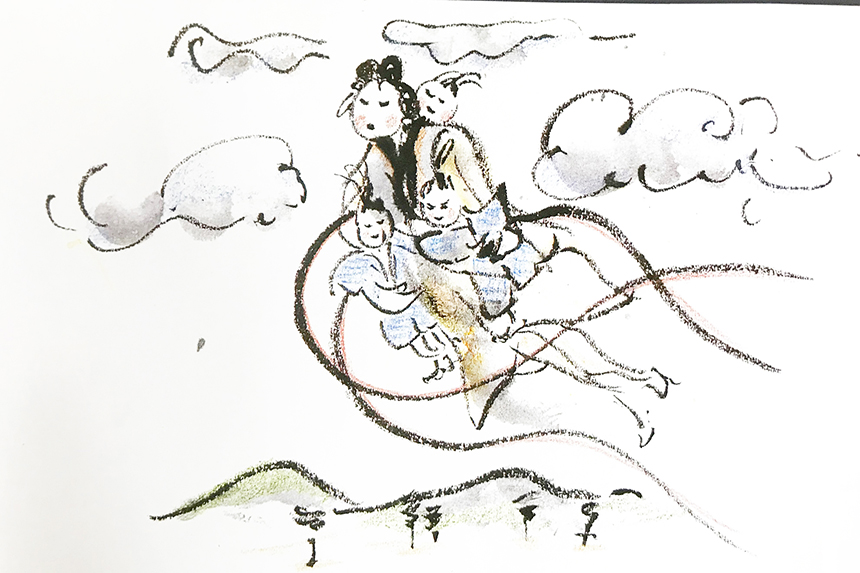
Heavenly Wife
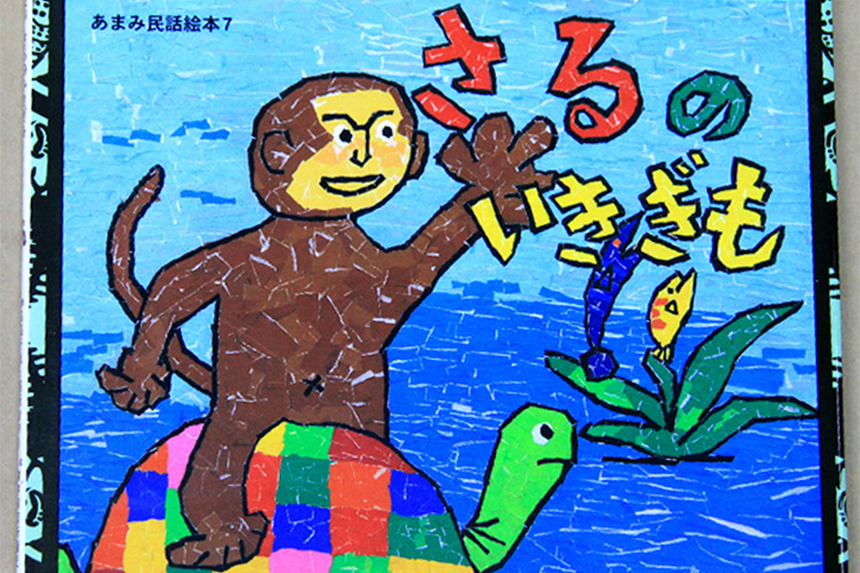
Saru no Ikigimo, Illustrated Folk Tales of Amami (Amami Folk Tale Society)
“Liver from a Living Monkey” is the story that, as a liver from a living monkey works to cure the princess of the Dragon King’s Palace of her disease, a turtle tricks a monkey into being taken to the Dragon King’s Palace. A derivation of this story can be found in a roughly 2,000-year-old book of India. It was introduced to Japan along with Buddhism and came to be widely told on Amami where the idea of Neriya thrived. The story is also shared with Thailand, China, and South Korea.

Kenmun no Gabutori, Illustrated Folk Tales of Amami (Amami Folk Tale Society)
Kenmun is a typical goblin on Amami associated with enigmas of fire, water, trees, smell, and sound, who is mainly mentioned on Amami and Tokunoshima. Similar goblins including ganao on Kikai Island, hinumun on Okinoerabu Island, hatapakimanjai on Yoron Island, and kijimuna in Okinawa are well-known. Also, a Korean ghost tokkebi, turning into a fireball, rolls around mountains and fields, challenges humans in his favorite sumo wrestling, and plays pranks on or inflicts harm on humans, and this reminds us of Amami’s kenmun.
Moreover, a folktale on Kikai Island entitled “Seven Swans” is similar to the “Six Swans” of Grimm’s Fairy Tales, and “Haibo (ash boy) on Okinoerabu Island can be said to be the Amami version of “Cinderella” of Grimm’s Fairy Tales. Many of Amami’s folktales share common elements with Grimm’s Fairy Tales. We can only assume that these tales have travelled the world for centuries as told with relish through Amami and beyond its shores to Europe.
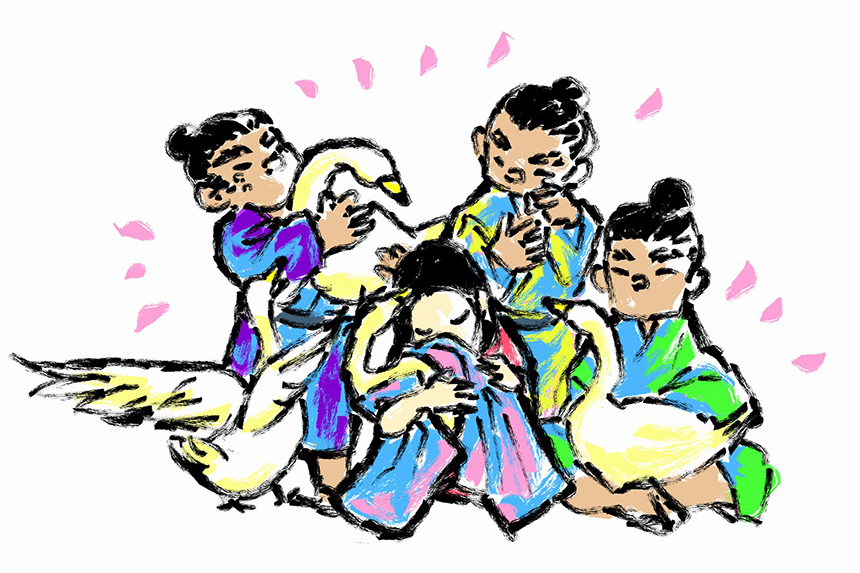
Illustration of Kikaijima folk tale Seven Swans
Illusts/ Nozomi Sakakibara & Kosaku Club

